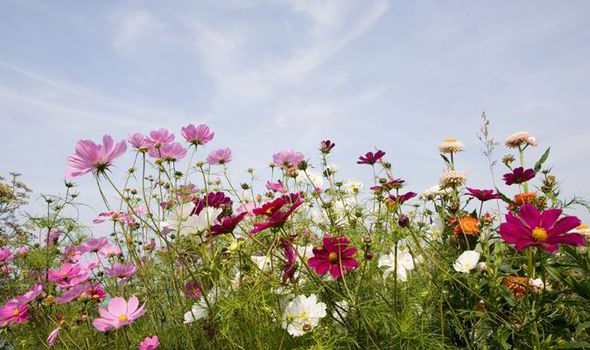Looking After Your Garden in May
Plant out container-grown roses and shrubs.
Fork compost into flower beds to prepare soil for summer bedding.
Continue to plant dahlia and lily bulbs, come summer you will be glad you did!
Pick rhubarb stems as they develop, and water clumps with a liquid feed.
Sow seeds of the following crops this week if conditions are fine: beetroot, parsnips, turnips, onions, peas and mangetout, broad beans, lettuce and salad leaves, spinach, radish, rocket, pak choi, cauliflower, cabbage and Brussels sprouts.
Thin out seedlings from earlier sowings.
Prune early-flowering clematis, such as Clematis Montana, immediately after flowering to control their size.
Keep newly planted trees and shrubs well watered until established.
Spray peaches and nectarines with fungicide to prevent an attack of peach leaf curl.
Place collars around the stems of brassicas to prevent an attack of cabbage root fly.
Collect hellebore seeds from ripe pods, and store in an envelope in the shed or sprinkle over prepared soil.
The vigorous growth of many herbaceous perennials and climbers often needs a helping hand to prevent them flopping onto neighbouring plants or over the edges of lawns and paths. Putting plant supports in place early means they even the most obvious ones can be hidden by the foliage in just a few weeks.
For clump-forming border plants such as Lupins, Rudbeckias, and Phlox, tie soft string around a circle of canes pushed in around each plant.
Give it a try… There’s nothing quite like home-grown lettuce to make a lunchtime sandwich into something special. Every week or 10 days I sow a small batch of assorted salad leaves in pots or trays, then cover the seeds lightly with compost. I keep the containers moist, to create a constant supply of fresh leaves. It’s easy to get started, with a ready-mixed packet of seed. Or better still; buy several packets of suitable crops, including a good range of lettuce colours and shapes, perhaps including some coriander, parley or mustard. Just mix the seeds together in a jar, and sow small batches at regular intervals. Don’t sow all at once or you will have a salad over load!
Growing under cover
With the unseasonably harsh weather, it’s handy to have a poly tunnel or glasshouse so you can continue on gardening. If you’re planning to buy a new greenhouse or tunnel, make sure you get the very best from it by placing it in the right location in your garden. This can make all the difference between success and failure. As you would imagine good light is very important, so keep it away from the shading of large trees.They will also leave you with a build up of green algae and leaves that can damage and block guttering. Preparing the area is essential before building; choose a level site, avoiding a sloped area if possible. If you’re planning on growing in the beds inside your tunnel or greenhouse, I would choose a spot with decent soil. Stony or rocky ground can make the construction process harder than it has to be. Ventilation is key to success, so leave plenty of space at the front and sides, especially when it comes to poly tunnels as opening the door is usually the only way to ventilate it. If your garden is windy, position your greenhouse or poly tunnel side on to the prevailing wind so it blows up and over, rather than slamming into one end. It also might be worth creating a wind break by planting a hedge. Of course, it may be that there is only one possible position you can put it, but if you do have a choice it is worth while giving it the best possible position you can.

